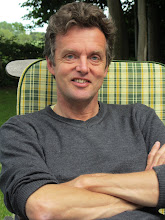DANISH GHETTOS
According to the Danish Government, there are 33 ghettos in the country. If it had its way, this would fall to 29. What is going on?
Ghetto is the name given to a residential area in the major cities that has two out of three of a high proportion of unemployed, immigrants and criminality. The term was invented (or, rather, revived) under the last Government, which was in hock to the very right-wing Danish People's Party, who were keen to link those three terms together. The new proposals add income and education levels to the mix, with an area qualifying if it falls on the wrong side of three out of five indicators. This has the benefit of reducing the number of ghettos, but it doesn't mean that the problems of the four areas that drop out have now been solved.
I'll make my position clear; there are no ghettos in Denmark. Ghetto has an unfortunate context in modern European history, but it is a particularly inappropriate concept in Scandinavia. When I first came here in 2000, there was a lot of talk about a "sink area" (the precursor of ghetto) in Odense called Vollsmose. Being keen on cycling, I biked out there to have a look, but couldn't find it. After cycling around for a while, I asked a passer-by if I had come to the wrong place. She told me I was standing right in the middle of it. But this was no sink area or ghetto. There were broad streets, green areas, a marked absence of litter. It looked rather nice.
As commentators have pointed out, the proposed changes in the classification criteria have done nothing to solve what problems there are in these areas. So now the Government has to do something. It could start by dropping the word ghetto.
Walter Blotscher
Monday, 13 May 2013
Subscribe to:
Post Comments (Atom)

It seems the Government produces cant and blunder.
ReplyDelete